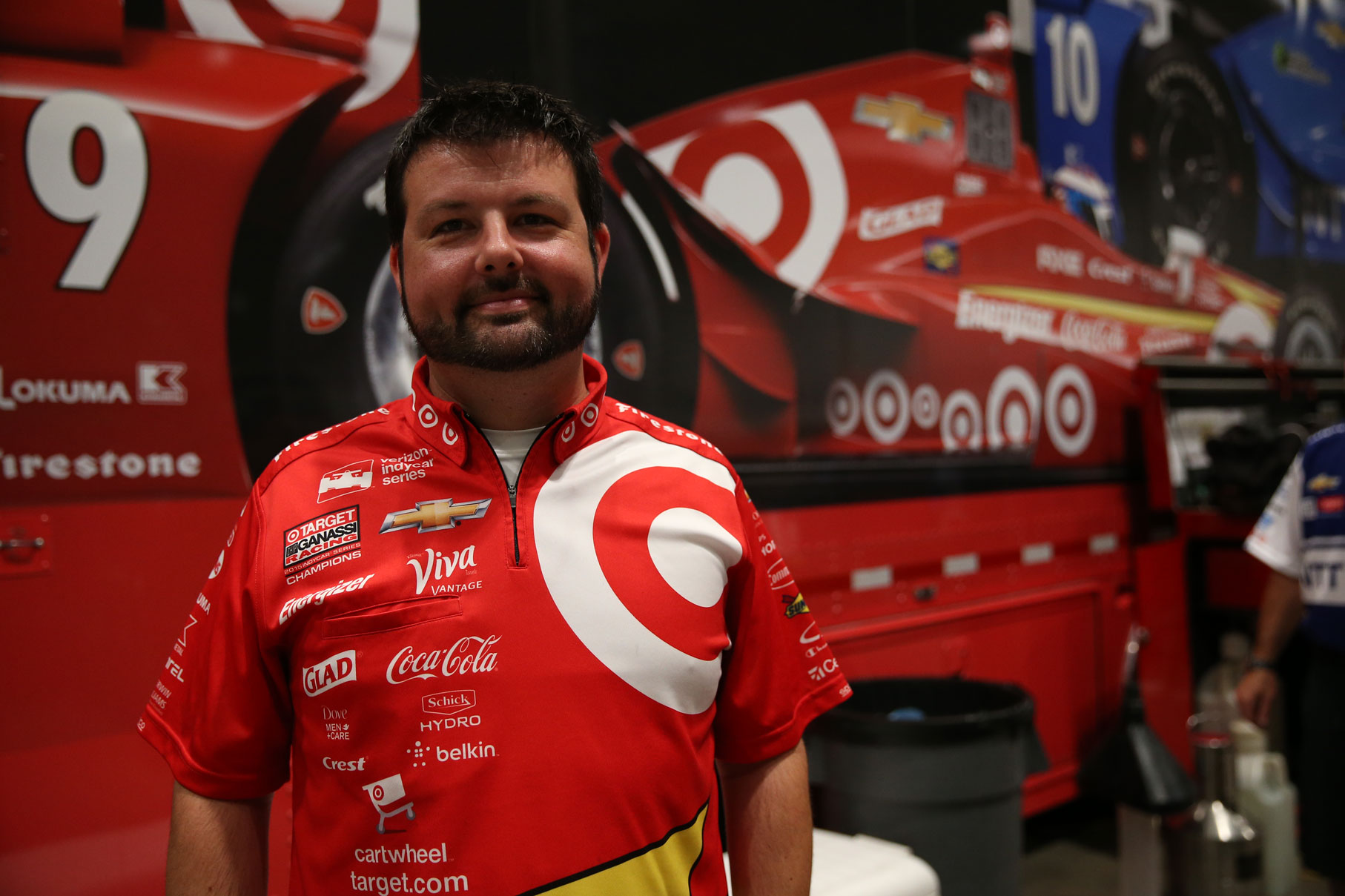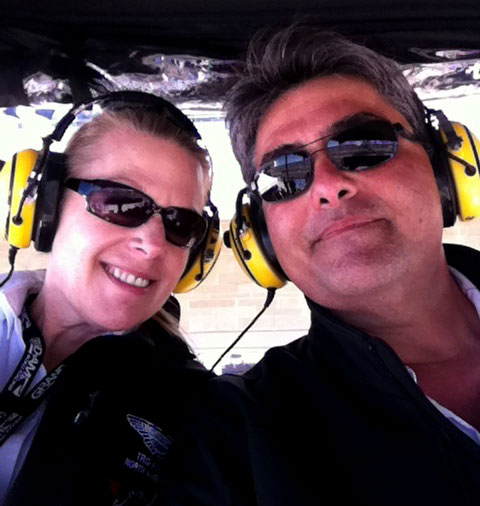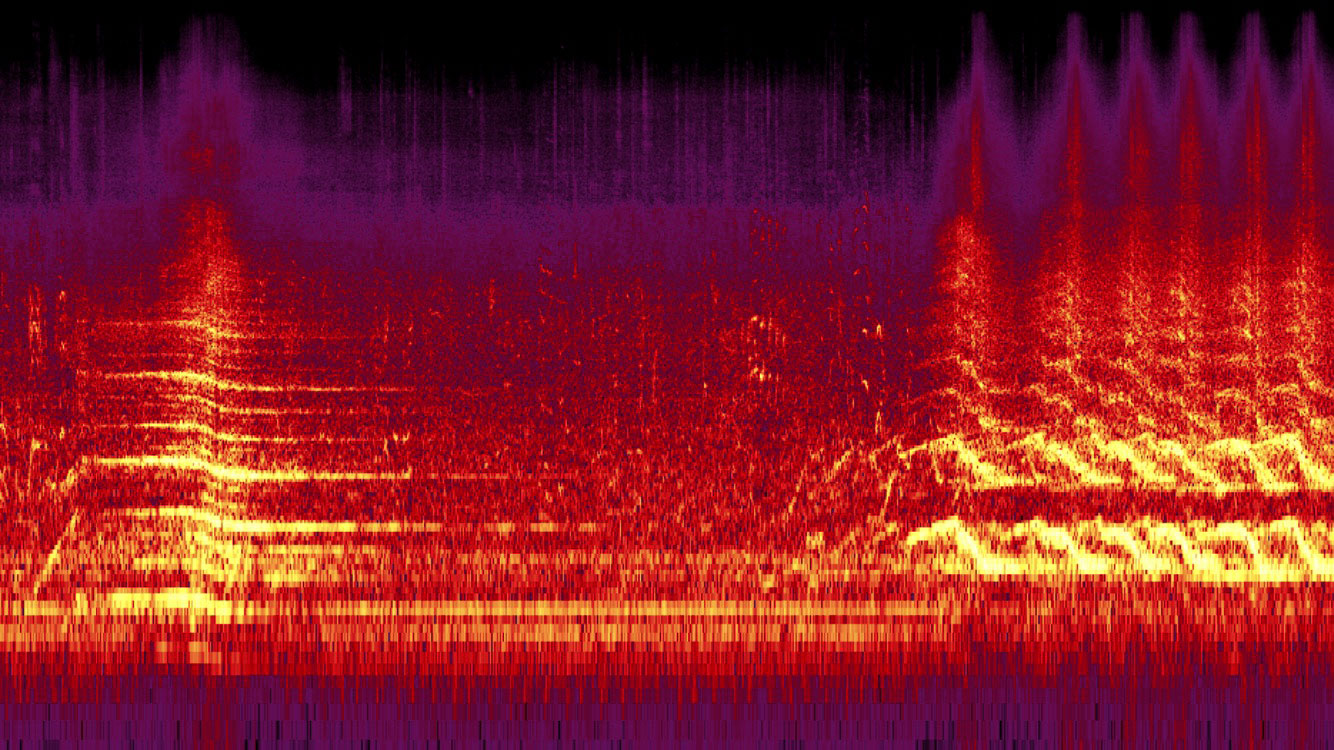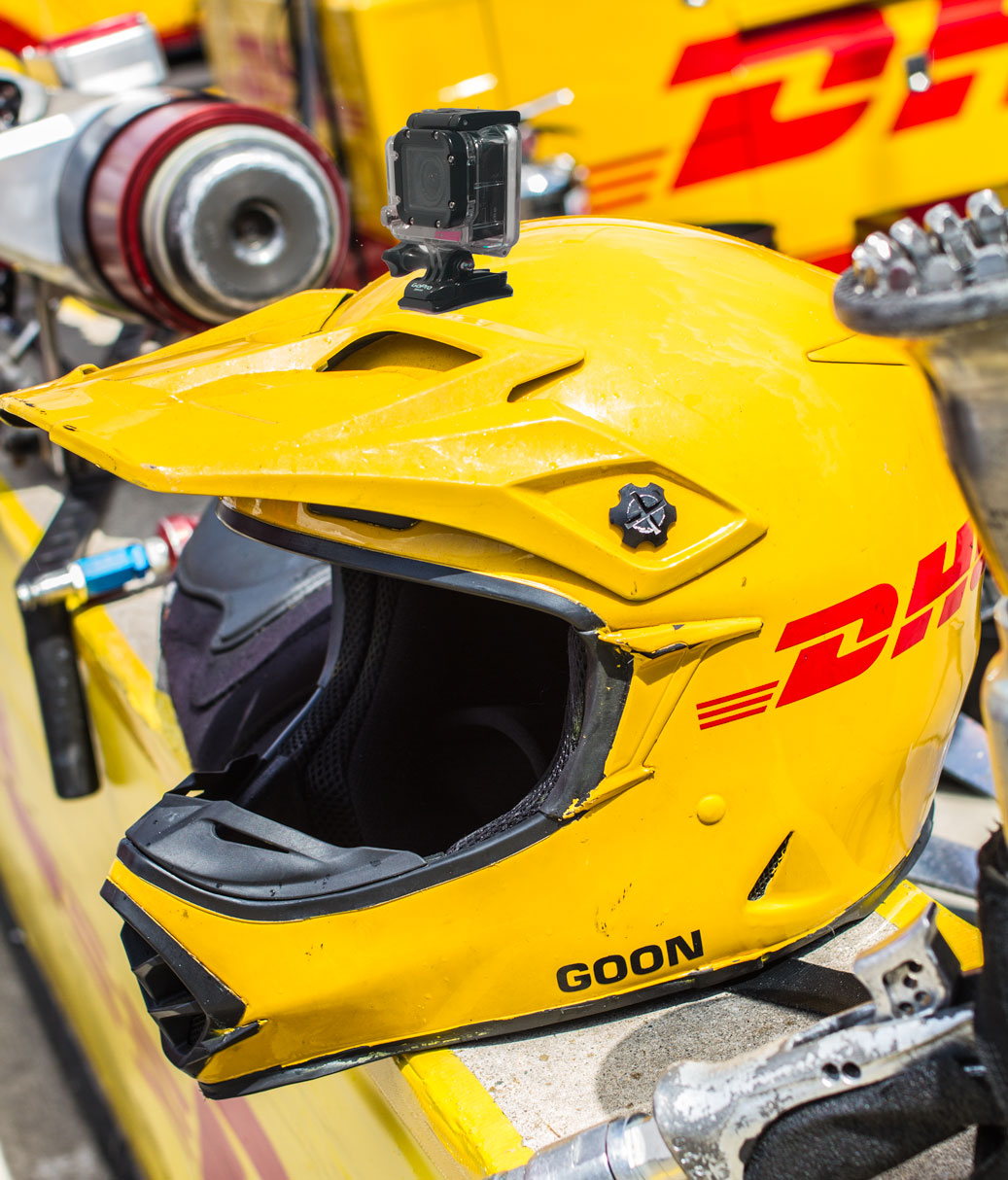Full Transparency
Our editorial transparency tool uses blockchain technology to permanently log all changes made to official releases after publication. However, this post is not an official release and therefore not tracked. Visit our learn more for more information.
On September 14, 2015, the Verizon IndyCar Series’ season was winding down. The newly-crowned champion, Target Chip Ganassi driver Scott Dixon, and retired IndyCar legend Dario Franchitti visited the Goodwood Revival, a globally-renowned festival held in West Sussex, England that celebrates the history of motor racing.
As is the custom at the revival, the two drivers who’ve made their living piloting some of the most technologically-advanced cars on the planet were dressed in period garb. Like well-disguised time travelers mingling in a bygone era, they marveled at last century’s speedsters and anachronistically snapped smartphone photos to upload to their social media accounts.
On the same day and on the other side of the Atlantic, the twin Laser Interferometer Gravitational-wave Observatory (LIGO) detectors—one in a pine forest in Louisiana and the other near a decommissioned nuclear production complex in Hanford, Washington—were trained on the heavens. Over twenty years in the making and at a cost of $1.2 billion, the LIGO detectors are “arguably the most sensitive scientific instruments ever created”. They were built for the purpose of detecting gravitational waves, a long-theorized but yet-to-be confirmed phenomena first predicted by Albert Einstein in 1916.
Then came “the chirp”. Out of space static sprung a sound like that of a solitary drop from a leaky faucet. Bloop. It was a spike in the signal that lasted only a fraction of a second. For the hundreds of physicists, engineers and data scientists working on the project, it’s exactly what they had been waiting for.
Two black holes—nearly 1.3 billion light years from Earth, of a combined mass equaling 30 times that of our sun, and approximately the size of greater Los Angeles—merged into a singular, supermassive black hole. A gravitational wave radiated from their coalescence, and “the chirp” was in fact a ripple in the fabric of spacetime. The cosmos had hiccupped, and LIGO heard it.
The event, known as GW150914, was the first-ever direct detection of a gravitational wave, and with that, Einstein’s general theory of relativity graduated from a century-old hypothesis to scientific fact.
A few months later, as IndyCar teams were hard at work in preparation for the 2016 season, LIGO announced its findings to the world. Target Chip Ganassi Racing simulation engineer Chris Abele, a former satellite engineer with a background in physics, came across LIGO’s detection papers. Although he enjoys keeping up on the latest happenings in science, it ended up being far more than just recreational reading. The methods that the LIGO team utilized gave him an idea.

“I can’t get too far into detail about it,” he says, keeping with the often-secretive nature of racing, “but we’ve actually been able to adapt some of the noise reduction and data analysis techniques that they’ve implemented to get some interesting stuff out of our race data.”
Abele humbly dismisses that his applications would even be of interest; faster race cars being nothing more than a tangential byproduct, like that of Tang or freeze-dried ice cream in relation to the moon landing, to LIGO’s historic discovery. “They [LIGO] would probably say that the physics of our cars are quite simple, and they’re right. The race car itself is really just a large system of Newtonian equations,” he says.
Following that logic, it would seem that the story could end there; LIGO upends our basic understanding of the laws of the universe, and IndyCar—along with everything else in the natural world—has to adjust. But there’s actually significant overlap between the two worlds, and it just takes a person intimately familiar with the both deep space and the race track to articulate it.
Astrophysics, meet motorsport
“I think I know what they [Target Chip Ganassi racing] are doing, and it’s so cool!” gushes Janeen Romie, Detector Engineering Lead at California Institute of Technology, LIGO Livingston Observatory. Romie has been involved with the LIGO project for over 20 years. Coincidentally, she and her husband also happen to own and operate an Aston Martin GT (sportscar) racing team, and it was going to drag races with her father during her childhood that had set her on a path towards a career in engineering.

While “on a run”, the LIGO observatories operate 24 hours a day, for months on end. When data of interest comes in, team members get an SMS alert and must hop on a conference call—probably the world’s smartest party line—to sift through the signal in question. “You have to do it immediately, and you have to do it on the phone,” explains Romie. She’s had to participate in several of these calls while at the track, toggling the mute button to not let the roar of the race car engines drown out the high-level theoretical physics.
For Romie, the approach taken by LIGO and race teams is in fact not that different: “We analyze the waveforms that come in against our model simulations, comparing it against what we think it’s supposed to look like. And this is exactly like when you’re at the race track,” she says. “One of the things that I think that he [Abele] has figured out is that you can implement band pass or band reject filters to remove anomalous effects,” she figures, citing the example of a street course like Belle Isle in Detroit, which the Verizon IndyCar Series visits every June.


The circuit is made up of public roads with countless bumps, cracks and undulations. Like outer space, it’s an environment that data scientists would consider “noisy”. The biggest challenge is to mute the “transient features, glitches localized in time and frequency” from the information they’re after. “You know it’s going to be bumpy, but if you ignore those amplitudes because you know they’re related to a bumpy track, then you’ll be able to filter out that bad data. The engineer can then just think about optimizing how fast the driver can go while still maintaining the downforce for his suspension to handle that corner. It’s such a beautiful thing,” Romie says with an earnest reverence.
Clipboards and helmet cams, sweating the small stuff
Whether they’re working under the precepts of Newton or Einstein, both LIGO and IndyCar teams operate with a nearly-zero margin of error. Precision is everything. A million-dollar race car or a billion-dollar observatory is only as good as its setup, and being a millimeter off here or there can throw everything out-of-whack, resulting in bad data or worse. The only way to manage these extremely complex situations is to remain methodical and organized. In this respect, the engineers on pit lane may actually have a heuristic head start (racing has been using data, in some form, for several decades, but gravitational wave science, as Romie points out, is “a brand new science”).
LIGO, in its evolving practice, has actually adopted some techniques that seem borrowed right from IndyCar’s pit lane. “Race teams require checklists to make sure that their vehicles are set up to perform exactly as required. We use checklists to do exactly the same thing, but with complex mechanical/optical assemblies,” says Romie.

And, much like many pit crews, LIGO has also begun using GoPro cameras to document their processes. “Video recordings allow us to do the same thing that race teams do—review before-and-after system configurations for parity, create detailed procedures from actual steps performed, review personnel actions compared to a set procedure, and provide comprehensive training scenarios for new team members,” she says.
Although it may be the somewhat mundane and unglamorous side of two exciting fields, discipline and a forensic attention to detail over a duration (a trait that all successful race teams seem to demonstrate) is what makes the big payoffs, like a championship season or the confirmation of Einstein’s general theory of relativity, possible.
The next time Dixon and Franchitti want to don some tartan and tweed to check out a race at Goodwood, thanks to LIGO, the idea that they could pop through a wormhole to get there is no longer a science fiction fantasy, but now a (distant, but distinct) mathematical possibility. Similarly, it could be argued that the best earthbound approximation for the magnitude of coalescing black holes—a vantage point from which we can firsthand witness the bending of spacetime—is standing near the catch fence as a vortex of Indy cars rockets by at 240 mph. These two worlds may have more in common than either side ever imagined and, surprisingly, it could grow beyond mere mutual admiration, as the Verizon IndyCar Series may have just as much to offer to, as it does to glean from, the nascent field of gravitational wave science.
Paul Biedrzycki is a New York-based writer/producer. He has been covering the automotive industry and motorsports for nearly a decade for such publications as DuJour Magazine, Esquire and Bentley Magazine. He studied English and Fine Arts at the University of Connecticut and Nova Scotia School of Art and Design.
